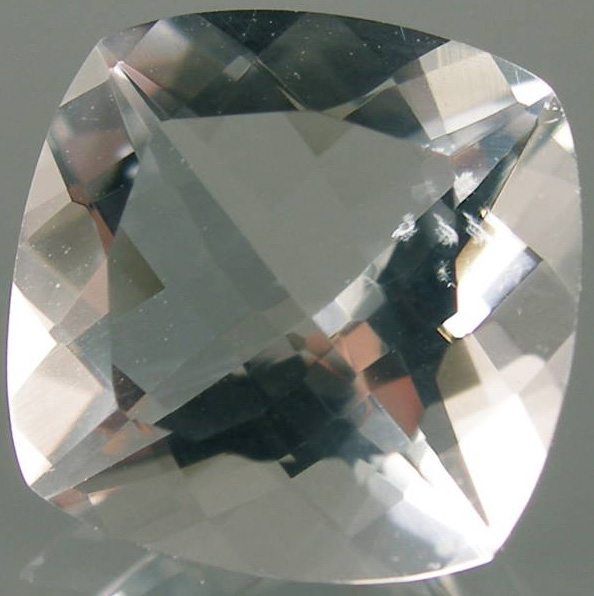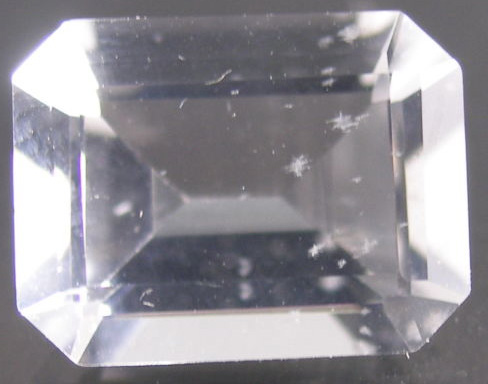Petalite

Petalite
(From Brazil. Weight: 1.61 carats)
Image © supplied by Woodmansee* Gems

Petalite
(From Brazil. Weight: 1.49 carats)
Image © supplied by Woodmansee* Gems
Petalite History & Etymology:
Petalite was first discovered in 1800 and is considered to be a grandfathered mineral by the IMA. Petalite derives its name from the Greek word petalos which literally translates into leaf - an allusion to the almost perfect basal cleavage of the Petalite crystals. Another etymology of the Petalite crystals also states that the name has been derived from Pollux. Pollux and Castor are considered to be heavenly twins and the brothers of Helen of Troy according to Greek mythology. However this should not be allowed to cause confusion with Pollucite, another mineral.
Petalite Occurrence:
Petalite though quite rare are found in many localities across the world. However, only the localities in Brazil produce gemstone quality crystals of Petalite. Brazil along with Petalite also yields gemstone quality crystals of other minerals.
Gemstone quality crystals of Petalite have recently also been found in Paprok in the Nuristan Province in Afghanistan, Bahia in the Northeast region of Brazil and in the Minas Gerais region in Southeast region of Brazil and in Mogok in the Sagaing District in the Mandalay Division of Mynamar. The biggest and clearest crystals of Petalite have been found in Brazil.
Petalite Properties:
Petalite is composed of lithium, aluminum, silicon and oxygen. The dominant silicon in the composition of Petalite crystals classifies Petalite as silicates mineral. Petalite is related to the Petalite-Virgilite Series.
Petalite displays monoclinic and prismatic properties. Petalite occur as tabular crystals or as elongated crystals in their natural form. The crystalline masses of Petalite are at least 2m in size. The faces of these crystalline masses of Petalite are often striated. The crystalline masses of Petalite are also massive and cleavable.
Twinning is commonly observed in the Petalite crystals. The twinning in the Petalite crystals is usually lamellar in nature. Petalite display perfect as well as imperfect cleavages. The fracturing on the Petalite crystals is imperfectly conchoidal in nature thus rendering the Petalite crystals quite brittle. Hence the Petalite crystals which are used in jewelry due to their clear appearance and brilliance have to be used carefully for they can be quite brittle.
The Moh’s hardness of the Petalite however lies between 6 and 6.5. Petalite crystals are relatively dense with a density of approximately 2.4 g/cm3. Petalite also display thermoluminescent properties but are not radioactive. Petalite range from occurring in its colorless to crystals with yellow coloring. Petalite also occur in white and gray colors. However crystals of Petalite with pink coloring are extremely rare.
Petalite are generally formed in lithium ores as well as in granite pegmatites which contain several lithium ores. The stunningly beautiful pale pink to slightly dark pink crystals of Petalite are sold at few hundred dollars per carat. Petalite are among the most sought after gemstones amongst gemstone collectors and gemstone experts. Collectors and experts consider the gemstones of Petalite to be a prized possession.
Back to the Gemstones List home page - over 160 gemstones explored!
Please feel free to link to this page - copy / paste the text below: (click to select)
Privacy Policy | Cookie Policy | GDPR | About This Site / Terms

© gemstoneslist.com 2018


